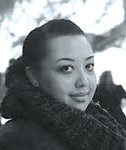

As a young child, Denise Pike experienced an attempted cross-burning on the front lawn of her family’s home in St. Louis Park. Her own family was multi-racial, and they shared the duplex with a Black family. Since then, Pike has wondered about racial differences and what housing in particular has to do with inciting violence against people of color.
During her master’s program for Heritage Studies and Public History at the University of Minnesota, Pike had the opportunity to be an intern for Mapping Prejudice.
Mapping Prejudice is a team of geographers, historians, digital humanists and community activists working with the University of Minnesota in order to expose structural racism. The data that they collect has brought thousands of racial covenants to light. These racial covenants were placed in order to prevent Black people from buying homes or property in Minnesota. On their website, mappingprejudice.org, there is a map of the Twin Cities area where home owners can find out if their home has a covenant placed on it and then have the option to remove it.
“This data makes the extent of racial discrimination across the city of Minneapolis and the surrounding areas impossible to ignore or discount,” Pike said.
In January 2020, the project extended into St. Paul and greater Ramsey County, Mapping Prejudice hosts online training events for volunteers to help read deeds and contribute to the database that plots covenants.
‘Owning Up’ exhibit
Since becoming an intern for Mapping Prejudice, Pike also worked on a project of her own. Her portable exhibit, “Owning Up,” explores the history of racial housing discrimination in Minneapolis through the stories of three Black families. Their experiences are displayed alongside the policy decisions and social practices that furthered the standard of racial segregation and continue to shape the city of Minneapolis.
The exhibit aims to counter the idea of Minneapolis as a “model metropolis” so that as a city, it can begin to recognize its past. More about her exhibit can be found at dpike.dash.umn.edu/owningup.
“While we make no policy proposals, we hope that the exhibit encourages visitors to think critically about their neighborhoods and the future of the city of Minneapolis,” Pike said.
She co-curated the exhibit along with Kacie Lucchini Butcher after their first year in the Heritage Studies and Public History Master’s program at the University of Minnesota. They worked closely together with Mapping Prejudice. Their goal is to create a visible representation of the systematic racism that’s happening.
According to Pike, Minnesota is ranked highest in racial disparities and residential segregation in a predominantly White area. She believes that these covenants aren’t just things of the past, but that they impact the community today and will in the future, as well.
“It puts into perspective just how wide-spread and destructive racially-discriminatory policies were to communities of color. In order to make reparations in the present day, we must fully understand the damages we are dealing with,” Pike said.
‘White public doesn’t realize full extent of disparties’
Areas that had racial covenants placed on property are still some of the most predominately White areas of Minneapolis and St. Paul. The areas that people of color were allowed to live in are still areas with the highest population of color. Despite racial housing discrimination being illegal for over 50 years, there are still long lasting patterns of segregation. Notable is the gap in homeownership rates. While 78 percent of white families own homes in the Twin Cities, only 25 percent of African-American families have title to their dwelling.
“Minneapolis and the Twin Cities see themselves as very progressive places but, I think that a large portion of the White public don’t realize the full extent of racial disparities here,” Pike said.
She also believes that the segregation of housing, in part, has to do with the current Uprising. Mapping Prejudice is for the purpose of giving people a deeper understanding of how ingrained structural racism is in Minneapolis. It is a tool to connect the dots between housing, policing, health and school disparities among others.
“I think the Uprising we are seeing locally is due in part to initiatives like Mapping Prejudice, which builds on the work of anti-racist activism.” Pike said, “Communities of color have known and lived this history and have been fighting back against structural racism all along, I think where this data has had the most impact, is in White residents.”
During her time with Mapping Prejudice, Pike said she has learned a lot. Through this, she has been able to have many conversations with community members. She and her co-curator met with educators, students, historians, politicians and real estate agents. They had personal discussions about how the exhibit and racial disparities in housing have impacted them. But, Pike thinks that more can be done. She hopes to encourage an ongoing conversation, like the ones she had around her exhibit, on local and present day structural racism.
“As a public historian I want to make those connections between past and present so that we can move forward towards a more equitable future,” Pike said.
Comments
No comments on this item Please log in to comment by clicking here